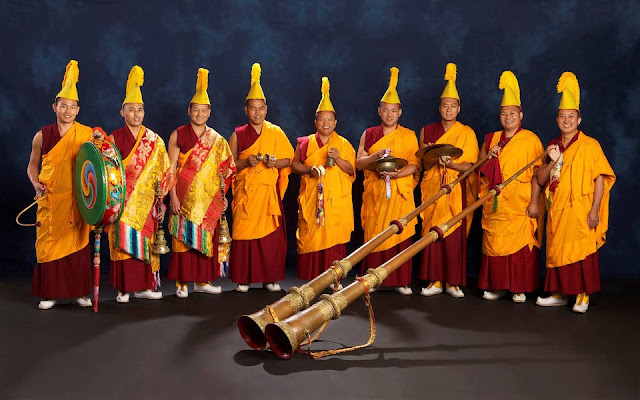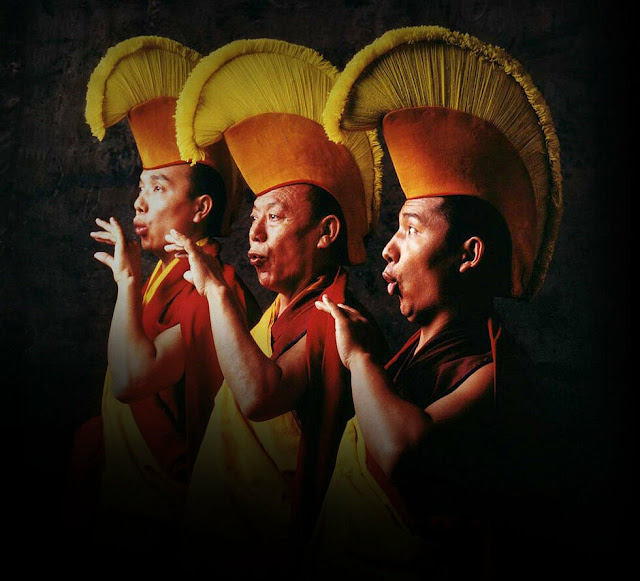Eldest am I in the world,
Foremost am I in the world,
This is the last birth,
There is now no more coming to be."
Afterbirth, the Buddha began walk on the 7 lotus steps, He stopped with his noble voice shouted.
"Profound peace, natural simplicity, uncompounded luminosity, I have found a nectar-like Dharma"
The enlightenment of the Buddha at the age of thirty-five in Bodhgaya.
"It is in the nature of all things that take form to dissolve again. Strive with your whole being to attain perfection"
The passing of the Buddha's Paranirvana in the forest grove in Kusinagara, India.
May 10, 2017 Wednesday is a day that fill with many special events:-
1) Shakyamuni Buddha Purnima/Visakha.
2) Full Moon Day of Vesak / Saga Dawa Duchen
3) Amithabha Buddha Prayer Day
4) Sojong Practices ( Eight Mahayana Precepts Practice)
- South Korea Buddhas Birthday - May 3rd
- Macau Buddha's Birthday - May 3rd
- Taiwan Buddha's Birthday - May 3rd
- India Buddha Purnima - May 10th
- Bangladesh Buddha Purnima - May 10th
- Thailand Visakha Bucha Day - May 10th
- Malaysia Wesak Day - May 10th
- Singapore Vesak Day - May 10th
- Cambodia Visak Bochea Day - May 10th
- Sri Lanka Vesak Poya - May 10th
- Myanmar Kasong - May 10th
- Indonesia Waisak Day - May 11th
- Bhutan Saga Dawa Duchen - June 09th
- Tibet Saga Dawa Duchen - June 09th
Shakyamuni Buddha, the historical founder of Buddhism, was born in India 3,000 years ago. There are various opinions concerning the exact dates of his birth and death, but according to Buddhist tradition, he is said to have been born April 8, 1029 BC and died on February 15, 949 BC, although other Buddhist scholars place his birth five hundred years later.
Come this Wednesday, May 10 its known as the Vesak day in many Asian countries. In Tibet it is known as the “Saga Dawa Duchen” and this festival is usually held at the 4th month of the Buddhist Calendar and this year it fall on the June 09, 2017.
Saga Dawa is called the "month of merits" for Tibetan Buddhists. Dawa means "month" in Tibetan, and "Saga" is the star prominent in the sky during the fourth lunar month of the Tibetan calendar when Saga Dawa is observed. Duchen means "great occasion." Saga Dawa Duchen usually begins in May and ends in June.
The Vesak Day or Saga Dawa Duchen day is the single most holy day of Tibetan Buddhism. Like the Theravada observance of Vesak. Saga Dawa Duchen commemorates the birth, enlightenment and death (parinirvana) of our historical Lord Shakyamuni Buddha.
This is a month especially dedicated to "making merit." Merit is understood in many ways in Buddhism. We can think of it as the fruits of good karma, especially when this brings us closer to enlightenment.
In early Buddhist teachings, the three grounds of meritorious action are generosity (dana), morality (sila), and mental culture or meditation (bhavana), although there are many ways to make merit.
Amithabha Buddha Prayer Day
"If you wish to come and be born in my realm, you must always recite my sacred mantra again and again, you must always keep this thought in mind without letting up, and thus you will succeed in coming to be born in my realm.
If my 48 Great Vows do not come to pass, may I not attain my enlightenment".
Amitabha Buddha 48 Great Vows
The Tibetan word of "Dewachen" literally means the celestial mandala or the Amithabha Buddha pure land, and in Sanskrit name is Sukhavati and in Chinese is 西方極樂淨土. The Sacred Pure Land of Amitabha Buddha was delivered by Shakyamuni Buddha at the Vulture Peak in Rajagriha, India.
Amithabha Buddha 南無阿彌陀佛 he is represents the Padma Lotus family. Amitābha means "Infinite Light" so Amitābha is also called "The Buddha of Immeasurable Life and Light".
He is the Buddha of the West direction.
His Mantra is " OM AMI DEVA HRIH "
His Mantra in Chinese is " 南無阿彌陀佛 "
His syllable is "Hrih"
His color is in red.
His element is signifies or represents fire
His symbolism is the Lotus.
His wisdom is signifies as Inquisitive and the wisdom of observation.
His hands mudras are signify as Meditation.
He is symbolizes or associated with summer season.
His consort is Pandara.
Sojong Practices ( Eight Mahayana Precepts Practice)
Sojong and its definition (Practice of Confession) by the second Buddha of Oddiyana.
"So" means to replenish, virtue and purify.
"Jong" means harmful deeds as the Tathagata has taught the practice of Sojong.
Sojong is the Tibetan language and it's also known as the 八關齋戒 or the Eight precepts by the Mahayana practitioners.
The observance of the Eight Precepts or Sojong Practices:-
1-To refrain from killing.
2-To refrain from stealing.
3-To refrain from sexual misconduct.
4-To refrain from lying and intoxication.
5-To refrain from taking a high or luxurious seat.
6-To refrain from singing and dancing.
7-To refrain from wearing ornaments.
8-To refrain from eating after midday.
Thank you for reading, may you find peace and great bliss. With your support it helps to spread the Buddha’s precious teachings and turning the Dharma wheels in the world.
Aspiration For Bodhichitta
For those in whom the precious Bodhichitta has not arisen
May it arise and not decrease
But increase further and further.
Dedication of Merit
By this merit may we obtain omniscience then.
Having defeated the enemies wrong-doings.
May we liberate migratory from the ocean of existence.
With its stormy waves of birth, old age, sickness and death.
*Note
I do not own or infringe any copyright of the picture(s).
Picture(s) courtesy and credit to the rightful distributors and or studios.
Picture(s) is/are intended for editorial use only.
Amithabha Buddha Prayer Day
"If you wish to come and be born in my realm, you must always recite my sacred mantra again and again, you must always keep this thought in mind without letting up, and thus you will succeed in coming to be born in my realm.
If my 48 Great Vows do not come to pass, may I not attain my enlightenment".
Amitabha Buddha 48 Great Vows
The Tibetan word of "Dewachen" literally means the celestial mandala or the Amithabha Buddha pure land, and in Sanskrit name is Sukhavati and in Chinese is 西方極樂淨土. The Sacred Pure Land of Amitabha Buddha was delivered by Shakyamuni Buddha at the Vulture Peak in Rajagriha, India.
Amithabha Buddha 南無阿彌陀佛 he is represents the Padma Lotus family. Amitābha means "Infinite Light" so Amitābha is also called "The Buddha of Immeasurable Life and Light".
He is the Buddha of the West direction.
His Mantra is " OM AMI DEVA HRIH "
His Mantra in Chinese is " 南無阿彌陀佛 "
His syllable is "Hrih"
His color is in red.
His element is signifies or represents fire
His symbolism is the Lotus.
His wisdom is signifies as Inquisitive and the wisdom of observation.
His hands mudras are signify as Meditation.
He is symbolizes or associated with summer season.
His consort is Pandara.
Sojong Practices ( Eight Mahayana Precepts Practice)
"Jong" means harmful deeds as the Tathagata has taught the practice of Sojong.
Sojong is the Tibetan language and it's also known as the 八關齋戒 or the Eight precepts by the Mahayana practitioners.
The observance of the Eight Precepts or Sojong Practices:-
1-To refrain from killing.
2-To refrain from stealing.
3-To refrain from sexual misconduct.
4-To refrain from lying and intoxication.
5-To refrain from taking a high or luxurious seat.
6-To refrain from singing and dancing.
7-To refrain from wearing ornaments.
8-To refrain from eating after midday.
Thank you for reading, may you find peace and great bliss. With your support it helps to spread the Buddha’s precious teachings and turning the Dharma wheels in the world.
Aspiration For Bodhichitta
For those in whom the precious Bodhichitta has not arisen
May it arise and not decrease
But increase further and further.
Dedication of Merit
By this merit may we obtain omniscience then.
Having defeated the enemies wrong-doings.
May we liberate migratory from the ocean of existence.
With its stormy waves of birth, old age, sickness and death.
*Note
I do not own or infringe any copyright of the picture(s).
Picture(s) courtesy and credit to the rightful distributors and or studios.
Picture(s) is/are intended for editorial use only.


















